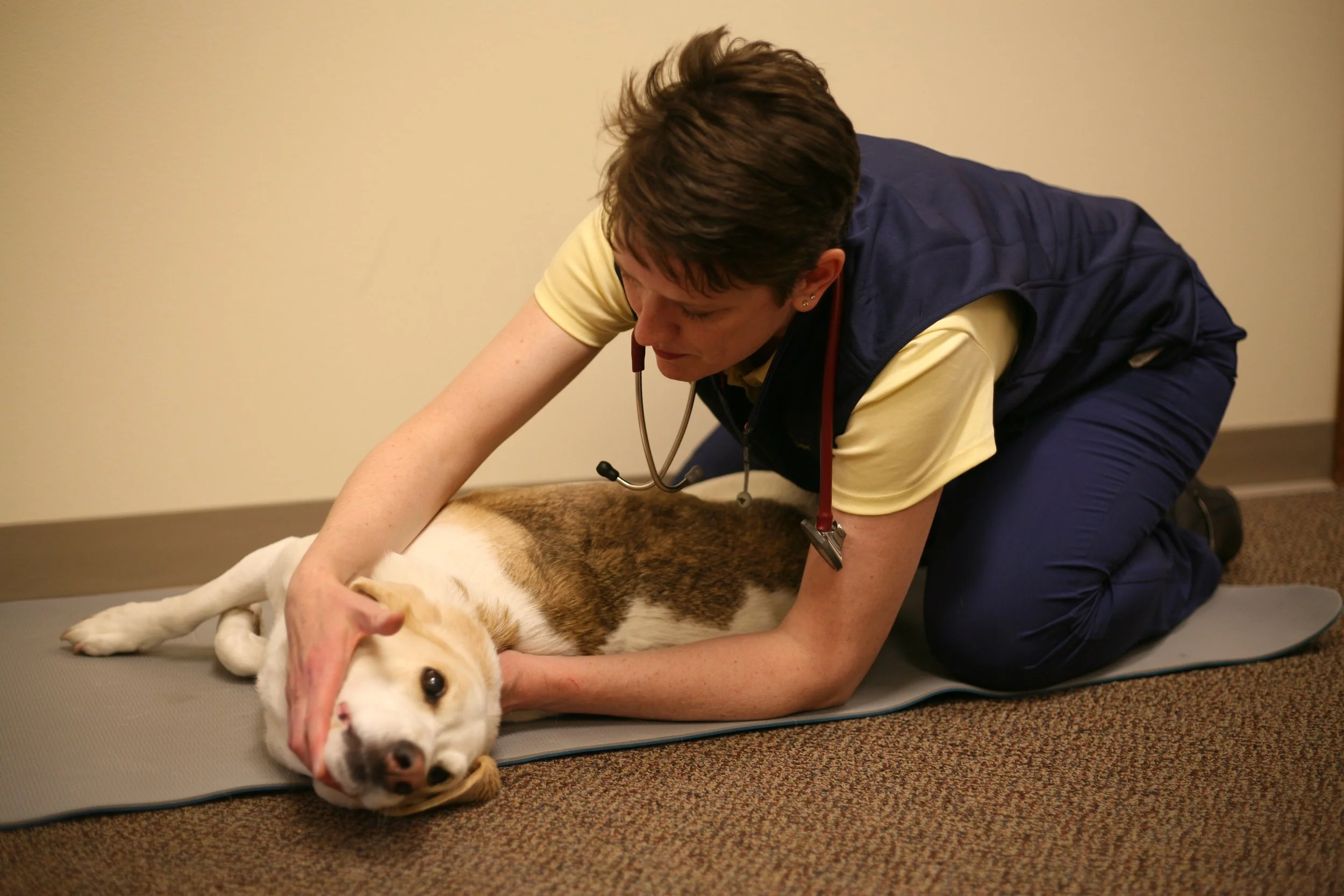Cervical pain can present with or without concurrent neurologic deficits and therefore maybe secondary to neurologic or non-neurologic disease.
Animals with neurologic deficits in addition to neck pain have a neuroanatomic lesion localization (C1-T2 myelopathy) which includes the region of pain.
Deficits noted in the C1-T2 lesion localization may include proprioceptive ataxia of all four limbs, tetraparesis (or plegia), reduced or absent postural reactions in all four limbs, +/- reflex deficits of the thoracic limbs. Postural reactions are often more severe in the pelvic limbs than thoracic limbs with a C1-T2 myelopathy therefore this finding should not dissuade you from this lesion localization. Rarely noted neurologic deficits may include unilateral Horner’s syndrome and unilaterally absent cutaneous trunci. With acute, peracute and severe cervical injury respiratory failure (lack of inspiration) can be seen secondary to damage to the phrenic nerve (driving diaphragmatic function) and/or damage to the upper motor neurons that regulate the intercostal innervation. A lesion localization of a C1-T2 myelopathy indicates neurologic damage, and therefore diseases affecting the nervous system should be considered for these patients. See the section below discussing differential diagnoses for animals with a C1-T2 myelopathy lesion localization.
Animals with cervical pain without neurologic deficits cannot have a neuroanatomic lesion localization because they do not necessarily have neurologic disease.
Therefore, the diagnosis written in the record should be “cervical pain”. These animals may have neurologic disease; however, diseases outside of the nervous system should also be included on a differential diagnoses list.
Differential Diagnoses (not a complete, textbook list...just the more common ones)
** Many differential diagnoses listed below may start with signs of neck pain ONLY, without evidence of a myelopathy and then may or may not progress to signs of a myelopathy.
Differential Diagnoses (not a complete, textbook list...just the more common ones)
** Many differential diagnoses listed below may start with signs of neck pain ONLY, without evidence of a myelopathy and then may or may not progress to signs of a myelopathy.
Acute/peracute onset clinical signs:
C1-C2 subluxation (congenital or traumatic)
Intervertebral disc herniation (type I)
Traumatic fracture/subluxation non-C1-C2
Meningomyelitis
Discospondylitis/osteomyelitis
Slow/subacute onset clinical signs
Discospondylitis
Vertebral or neural neoplasia (note: intramedullary neoplasia is commonly non-painful. Any involvement of the meninges can result in cervical pain.)
Intervertebral disc herniation type II
Syringohydromyelia
Cervical spondylomyelopathy (AKA Wobbler’s syndrome)
Meningomyelitis
Acute, non-progressive clinical signs
Fibrocartilagenous embolism (note: this may be painful in the first 24 hours, however most become non-painful after 24 hours.)
Syringohydromyelia
What do you do?
First, a neurologic examination. If the animal has neurologic deficits, referable to the cervical region, localize the lesion. (Self promotion plug here....remember if you're not confident with a neurologic examination, please call for a consult!)
Radiographs are useful if trauma or subluxation is a primary differential diagnoses. Treatment should follow with your differential diagnoses list. If the pet is poorly or non-ambulatory a consultation or referral to a neurologist is recommended ASAP.
Thanks for reading! I hope you have a great start to 2022. Keep those consults coming!

